Reviews
Michael Mann
USA, 1992
Credits
Review by Jenny Jediny
Posted on 22 April 2012
Source 20th Century Fox DVD (Director’s Expanded Edition)
Categories Chick Flicks
Women have a unyielding love affair with literary men; whether they are roaming the moor (as in Emily Bronte’s Wuthering Heights) or stifling their passion in the 19th century drawing rooms fictionalized by Edith Wharton, the leading men in these novels have captivated decades, if not centuries of readers. Inevitably modern writers have attempted to capture this aura, most generically in the romance novel, but both readers and Hollywood prefer to revisit the classics. Adaptations were particularly abundant during the 1990’s, with a strong focus on the films of Jane Austen, Edith Wharton, and Henry James, along with popular modern twists on these literary landmarks, namely Clueless and 10 Things I Hate About You. Among these female-targeted releases, director Michael Mann (more notable of late for The Insider and Collateral) slyly crept in with his 1992 adaptation of James Fenimore Cooper’s The Last of the Mohicans, a film cleverly designed for women in the guise of a epic action flick.
Putting Cooper’s trying and meticulous prose aside, Mann focuses on the enrapturing figure of Hawkeye, effortlessly portrayed by Daniel Day-Lewis. His subsequent role after his Academy Award-winning performance in My Left Foot depicting cerebral palsy, Day-Lewis returned to the screen in what one might deem a wilderness version of Fabio, complete with flowing locks and a suddenly impressive muscular physique. Hawkeye, along with his Mohican father Chingachgook and brother Uncas, escort Cora and Alice, daughters of British Colonel Munro, through the forests of upstate New York to Fort William Henry. Members of a rival Huron tribe, led by the malicious Magua, trail the group with intent to vengefully kill the entire Munro family. Eventually tension comes to a head as Magua takes the Munro daughters prisoner, leaving the Mohicans to rescue them.
The Last of the Mohicans relishes in romantic details, which hit the viewer full on from the start. The opulent score, enhanced with Celtic aspects, is reminiscent of swashbucklers of Hollywood’s studio age and as unabashedly dramatic as the cinematography. While Cooper intended for his novel to express the intricate and misunderstood lives of Native Americans, Mann’s film, while biased toward the Mohicans, utilizes the connection between nature and the tribe for a more quixotic purpose. In the opening scene, Hawkeye and his family race through the woods in unclear pursuit, and it comes as a slight surprise that they are in fact hunting deer, not a human enemy. Upon shooting the creature, Chingachgook kneels and asks for the deer’s forgiveness, while honoring its swift and graceful nature. The compassion communicated through this scene immediately sets up the dynamic between the Mohicans and the rather impassive British officers, who entirely oppose Native American beliefs in their loyalty to the British empire. The Mohicans continually express humanity and a spiritual connection to the wilderness, elements that are highly attractive to not only the Munro sisters in the film, but also the female audience.
True to form, the character of Hawkeye embodies all of these alluring qualities and is a quintessential romantic rebel; beholden to no one, Hawkeye is a self-preservationist, but with a sense of duty to not only his Native American upbringing (he is actually a white orphan), but also to his fellow settlers rather than the government (asked why he is not fighting with the militia against the French, one of Hawkeye’s more choice responses is “I ain’t your scout. And I sure ain’t in no damn militia”). Hawkeye’s ultimate goal (prior to encountering Cora Munro) is to move west, in the clichéd hopes of autonomy, to evade not only the Crown, but also the immense colonization taking place on the East Coast.
The casting of Daniel Day-Lewis was an unexpected and inspired decision, as the actor’s previous roles were entirely removed from this genre, let alone the romantic leading man. Despite the overblown lines (“You stay alive, no matter what occurs! I will find you!”) there’s something cheeky and immensely enjoyable in Day-Lewis’ performance (which I imagine he took quite seriously, as his preparation included inhabiting the woods for several months prior to filming). Along with his nuanced performance, Day-Lewis’ ease in his physical acting comes across clearly onscreen, perhaps one of the more significant reasons he’s believable in the role. Aside from his physical prowess, the smoldering glances given toward Cora inevitably raised Day-Lewis’ heartthrob level.
In turn, Cora is significantly altered from her character in the novel, where her role is actually reversed with her sister Alice. Madeleine Stowe infuses Cora with a fair amount of modernity; unsure of a marriage proposal to a British officer, she is obviously agitated when he suggests that she let her father make the decision. Cora also willingly takes up a gun after the first Huron attack, and remains by Hawkeye’s side, readily prepared to fight as they take up night watch. Established as the stronger sister, Cora also displays vulnerability in her attraction to Hawkeye, but rather than weakening her character, the bond gives her strength in the film to oppose not only her suitor but also her father and his traditional beliefs, a military man whose loyalty severely impairs his judgment.
Despite its strong appeal for women, elements of the film strongly connect it to the action genre, and yet the film remains a sort of hybrid. While arguably violent, The Last of the Mohicans is divergent for a genre typically marketed towards men. The large-scale action sequences, primarily involving Native American attacks on British army forces, contain brutal flashes of violence, ranging from scalping to a human heart literally carved out of a dying man’s chest. However the depiction of violence, one of the more divisive arguments in relation to media, is not only deftly handled, but also emits intelligence and purpose. Certainly not averse to violence, and often injecting flair into these scenes (the memorable weapons used by the Mohicans are an excellent example) Mann manages to instill the larger themes of the film, particularly the erasure of the frontier, and subsequently the Native Americans into these scenes, forming an emotional crux that keeps the violence from growing gratuitous.
At the forefront of the film remains the forbidden romance, between Hawkeye Cora, although a parallel subplot develops involving the younger sister Alice and Hawkeye’s brother, Uncas. Unlike the florid language exchanged between Hawkeye and Cora, Alice and Uncas barely exchange a word, and a communication develops that evokes the memory of a silent film serial, with a number of soulful gazes and sudden embraces. However, it is a tragic romance, as both perish in a rather melodramatic, although genuinely poignant fashion.
The surviving couple finds solace in one another, amidst a changing landscape as prominent in this story as in a far larger epic, Gone With the Wind. Numerous visuals in Mohicans are reminiscent of that seminal film (and hardcore chick flick), but in particular the last shot, held on the silhouettes of Hawkeye, Cora, and Chingachgook as they gaze out toward the unknown frontier. Evoking the spirit of Scarlett O’Hara as she clings to the earth of Tara, the trio sees a new world, where land is not yet viewed in the Southern terms of the plantation and economy, but is inevitably en route with increasing colonization that will push not only the Native Americans, but eventually settlers west. In its allusion to the illustrious Southern epic, The Last of the Mohicans clearly pays homage to the genre; Although romance and sensational drama is the base of its surface appeal, it is the emotional core, as well as the connection to larger ideologies that not only augment the film but make it memorable.
More Chick Flicks
-

The Truth About Cats & Dogs
1996 -

Say Anything
1989 -

Gas Food Lodging
1992 -

Pretty Woman
1990 -
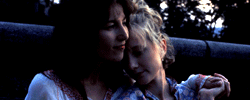
Walking and Talking
1996 -

Mean Girls
2004 -

Fried Green Tomatoes
1991 -
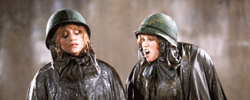
Private Benjamin
1980 -
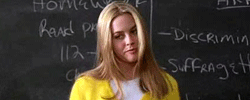
Clueless
1995 -

Erin Brockovich
2000 -

The Bridges of Madison County
1995 -
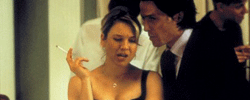
Bridget Jones’s Diary
2001 -

Working Girl
1988 -

Bend It Like Beckham
2002 -

Bring It On
2000 -

Ghost
1990 -

Truly Madly Deeply
1991 -
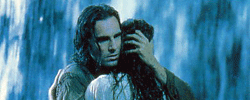
The Last of the Mohicans
1992
We don’t do comments anymore, but you may contact us here or find us on Twitter or Facebook.



